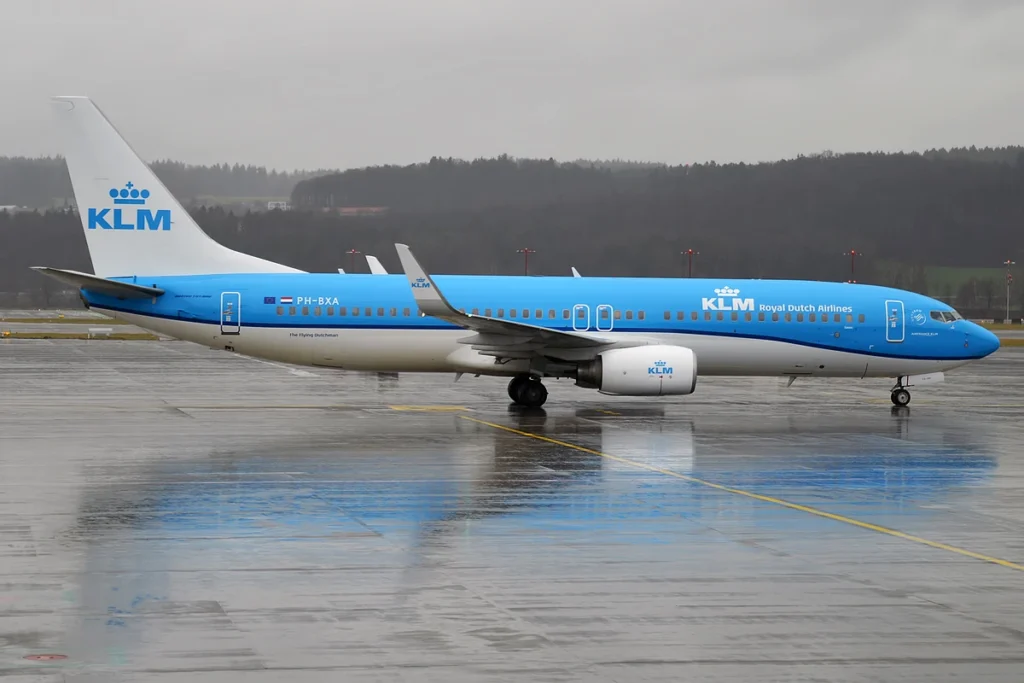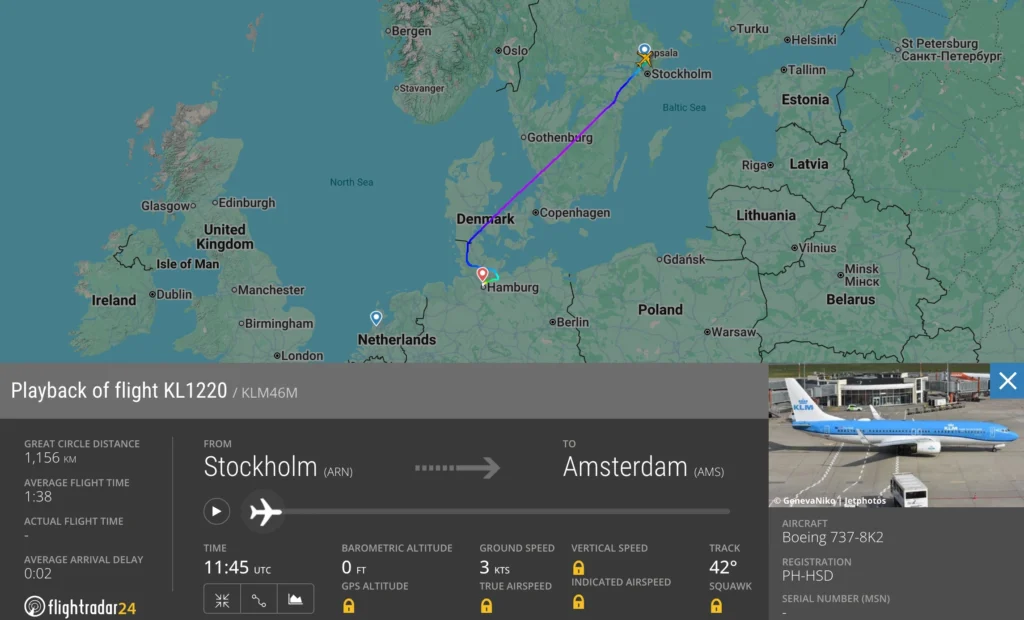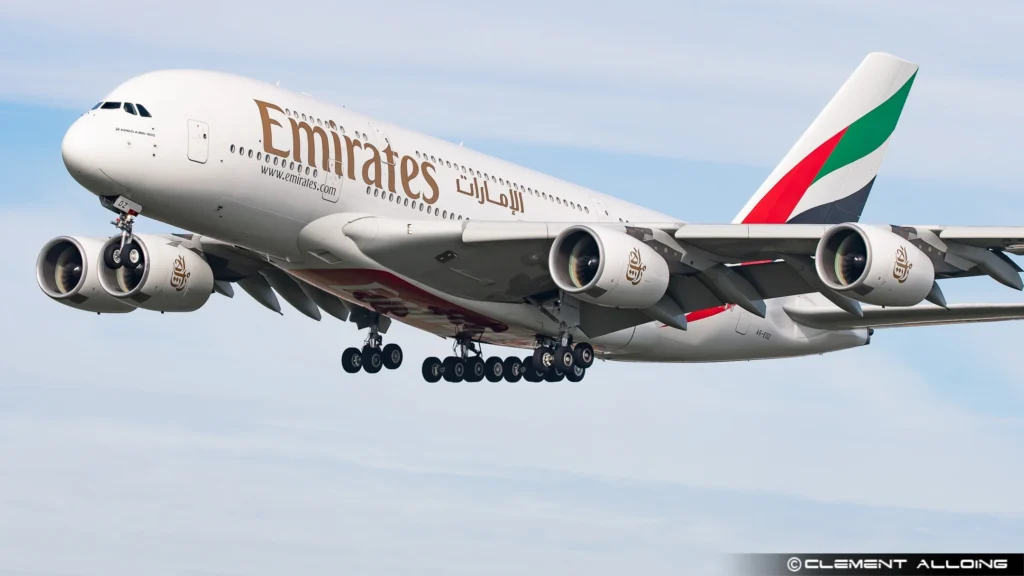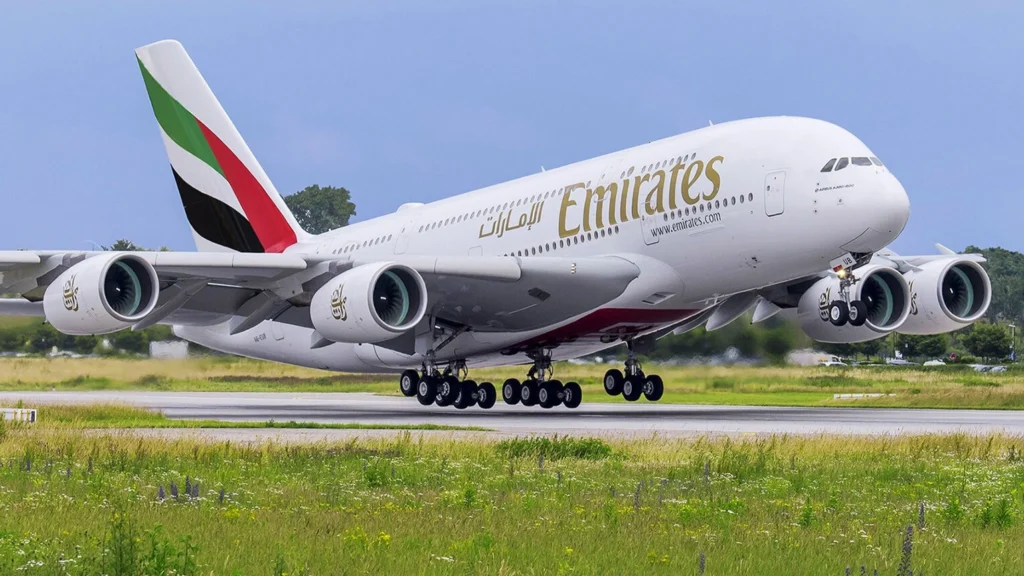
AMSTERDAM— A KLM Royal Dutch Airlines (KL) Boeing 737-800 operated flight made an emergency landing at Hamburg Airport (HAM) on Wednesday (July 23, 2025) after the crew reported smoke from one of the engines mid-flight.
Flight KL1220, operating from Stockholm Arlanda Airport (ARN) to Amsterdam Schiphol Airport (AMS), diverted while cruising at FL380 over Danish airspace, approximately 140 nautical miles north of Hamburg (HAM).
 Photo: By Anna Zvereva from Tallinn, Estonia – KLM, PH-BXA, Boeing 737-8K2, CC BY-SA 2.0, https://commons.wikimedia.org/w/index.php?curid=66225228
Photo: By Anna Zvereva from Tallinn, Estonia – KLM, PH-BXA, Boeing 737-8K2, CC BY-SA 2.0, https://commons.wikimedia.org/w/index.php?curid=66225228KLM 737 Emergency Landing at Hamburg
The incident involved a 14.4-year-old Boeing 737-800 aircraft, registered as PH-HSD, carrying 186 passengers on board. While en route from Stockholm (ARN) to Amsterdam (AMS), the crew received a left engine fire indication related to the CFM56 engine.
As a precaution, they shut down the affected engine and immediately coordinated with air traffic control to divert the flight.
The aircraft safely landed at Hamburg Airport (HAM) on runway 23 approximately 30 minutes after the crew initiated the diversion. Emergency services were on standby but did not need to intervene after the plane landed without incident.
 Photo: FlightRadar24
Photo: FlightRadar24Cause of the Incident and Response Measures
KLM (KL) later confirmed that the smoke originated due to low oil levels in the engine.
Despite the fire warning, the airline clarified that passenger safety was never at risk. The cabin crew followed all standard safety protocols during the diversion, ensuring calmness and order throughout the flight.
Hamburg Airport (HAM) briefly declared a state of emergency, temporarily halting all inbound and outbound air traffic.
According to BILD, normal operations resumed within 30 minutes once the aircraft was safely on the ground and the situation was under control.
After landing, the 186 passengers found themselves temporarily stranded at Hamburg Airport.
KLM assured affected travelers that they would be rebooked onto the earliest possible alternative flights to reach their final destination in Amsterdam (AMS). The airline also offered assistance at the airport and communicated updates via its ground staff.
The aircraft involved, a Boeing 737-800, is a standard short- to medium-haul twin-engine jet widely used across European routes. The CFM56 engine type is one of the most commonly deployed and generally reliable powerplants in commercial aviation.
 Photo: Clément Alloing
Photo: Clément AlloingSimilar Incident
An Emirates (EK) Airbus A380-800 experienced an in-flight engine shutdown while operating flight EK203 from Dubai International Airport (DXB) to New York John F. Kennedy International Airport (JFK) on June 28, 2025.
The aircraft, registered A6-EUW, was under the control of Boston Center when the number one engine failed. Despite the incident, the crew successfully landed the aircraft on runway 22L at JFK at 8:57 AM local time, with 450 passengers onboard.
Emirates flight EK203, a scheduled long-haul service from Dubai (DXB) to New York (JFK), experienced a partial power loss while cruising over northeastern United States airspace.
The Airbus A380-800, with tail registration A6-EUW, was operating normally until the number one engine — located on the aircraft’s far-left side — was shut down by the flight crew following a technical anomaly.
Boston Center air traffic controllers were the first to be alerted when the aircraft began operating on three engines.
After confirming the engine shutdown, the controllers coordinated with New York Approach, who then declared an emergency on behalf of EK203 to prioritize landing arrangements and mobilize precautionary response protocols.
 Photo: Emirates
Photo: EmiratesCoordinated Response
Despite the seriousness of the engine loss, the flight continued under full control. The cockpit crew managed fuel, altitude, and speed adjustments with high precision. The aircraft had approximately 24.8 tonnes of fuel left — sufficient for about one additional hour of flight — at the time of the incident.
New York Approach cleared EK203 for landing on runway 22L, the airport’s longest runway, at the crew’s request.
Throughout the approach, ATC and the flight crew exchanged critical data, including unit conversions for fuel (from kilograms to pounds) and adjustments to altimeter settings. The Emirates pilots promptly handled all inputs while maintaining a stable approach.
Emergency services were on standby but not activated, as the aircraft landed without incident and taxied to the terminal under its own power.
After landing, the Airbus A380 remained parked at JFK for inspection and necessary maintenance. The aircraft was grounded for a week and resumed service on July 5, 2025, flying back to Dubai (DXB).
Stay tuned with us. Further, follow us on social media for the latest updates.
Join us on Telegram Group for the Latest Aviation Updates. Subsequently, follow us on Google News
KLM Amsterdam to Toronto Flight with A330 Makes U-Turn
The post KLM 737 Pilots Makes Emergency Landing with One Failed Engine appeared first on Aviation A2Z.

![Zełenski i Nawrocki twarzą w twarz w Warszawie. Oto plan wizyty prezydenta Ukrainy [RELACJA NA ŻYWO]](https://i.iplsc.com/-/000M3N7G0014H6CA-C316.jpg)




![W Sejmie nowe prawa dla niektórych działaczy, pomoc udzielona obywatelom Ukrainy. Co jeszcze? [Transmisja online]](https://g.infor.pl/p/_files/38987000/sejm-38987258.jpg)




